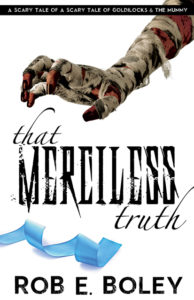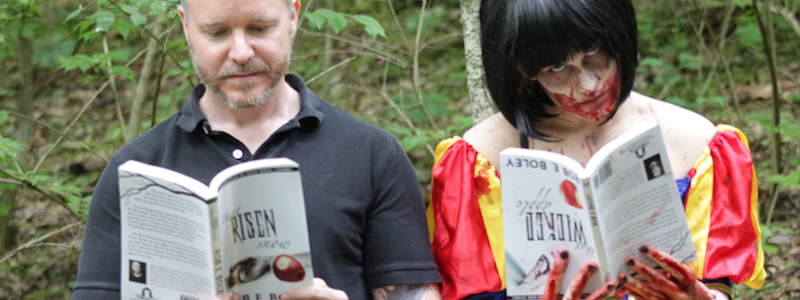by Rob E Boley
The tiny creature senses danger and thrusts its only means of defense—two barbed lancets rooted to its core—into the massive attacker’s face. The giant roars. The barbs cannot be pulled back out of the victim. As the giant smacks the diminutive creature away, the lancets, which are actually modified egg layers, remain lodged inside the giant, taking with them a chunk of the small creature’s abdomen and part of its digestive tract, muscles, and nerves. Even after it falls to its death, nerve cells left behind continue to urge the stinger’s barbed shafts to grind back and forth. This causes the lancets to burrow further into the giant’s flesh. Inside an attached venom sac, muscular valves deliver toxins through the lancets into the giant’s skin.

This may sound like something from a horror fantasy story, but it’s actually what happens when a honey bee stings someone. Like a kamikaze pilot, the bee dies in the process of its attack, committing the ultimate sacrifice for its hive.
Recently, I attended a presentation about bees, during which the speaker discussed the social structure of honey bees and how the act of stinging kills the bee. Individually, this makes little sense as an evolutionary adaptation, but honey bees don’t live as individuals. No, they live as superorganisms.
In biological terms, a superorganism is a group of organisms living as an organized community with specialized division of labor and without which lone individuals of the species can’t survive for long. As I digested this concept of the superorganism, I couldn’t help but think about how it applies to zombies.

If you think about it, masses of zombies tend to become superorganisms. Consider the herds of zombies from Robert Kirkman’s Walking Dead comics (or the t.v. show of the same name). The undead ghouls band together on an instinctive level and begin moving in small groups. Those groups merge with other groups and pick up stragglers on the way. They move with one purpose only: to find food. When they hear noises or sense other indications of life, they move with the power and fury of a thunderstorm, trampling all that it within their path.
Or think about most any zombie novel, show, or movie in which large groups of the ghouls come together to devour bands of human survivors. To a well-prepared individual armed with weapons, skills, and knowledge, a lone zombie is a bothersome nuisance. But a zombie superorganism consisting of several thousand zombies is nearly unstoppable.
To consider other applications of this premise in a post-zombie apocalyptic world, think about another superorganism—the fire ant.
These insects can form superorganism consisting of thousands of individual ants capable of razing anything in its path. They can tear down crops and level trees. In times of flooding, they can cling to each other to form primitive rafts. These resourceful little insects also act as farmers and raise aphids as livestock. They build sophisticated homes, wage battles, and even keep slaves.
If you apply these traits to zombies, just imagine the horrors of an advanced zombie-infested world. Maybe it starts with them running in herds. But as the herds develop, maybe the faster zombies become scouts and the slower zombies find other roles. Eventually, maybe the division of labor becomes even more specialized. Maybe they construct zombie hives complete with crude prisons for human cattle and slaves. Eventually, this zombie superorganism goes to war with rival zombie clans.
Consider, too, that many superorganisms have a leader, or queen. David Wellington’s zombie series, Monster Island, explores what happens when one zombie retains intelligence and can orchestrate the actions of other zombies. This mastermind zombie acts much like a queen bee, making the zombies more organized and dangerous as they act towards a common goal. In my own series, The Scary Tales, the zombie plague was unleashed by Snow White’s cursed apple, and Snow herself acts as the queen zombie, wielding their numbers with vicious strategy and horrific results.
Be it through instinct, intellect, magic, or some other means, the possibilities for horror writers are endless when we go beyond single zombies and consider the ramifications of a zombie superorganism.
LINKS:
Check out Rob E Boley …
on his Author Website
on Twitter
on Facebook
on Goodreads
Buy the latest book …
on Amazon
on BN.com
on GooglePlay
Check out the earlier books from the series in an easy bundle now!

Check out Book 2 of the Dead Song Legend by Jay Wilburn.
 Jay Wilburn lives with his wife and two sons in Conway, South Carolina near the Atlantic coast of the southern United States. He has a Masters Degree in education and he taught public school for sixteen years before becoming a full time writer. He is the author of many short stories including work in Best Horror of the Year volume 5, Zombies More Recent Dead, Shadows Over Mainstreet, and Truth or Dare. He is the author of the Dead Song Legend Dodecology and the music of the five song soundtrack recorded as if by the characters within the world of the novel The Sound May Suffer. He also wrote the novels Loose Ends and Time Eaters. He is one of the four authors behind the Hellmouth trilogy. He cowrote The Enemy Held Near with Armand Rosamilia. Jay Wilburn is a regular columnist with Dark Moon Digest. Follow his many dark thoughts on Twitter, Instagram, and Periscope as @AmongTheZombies, his Facebook author page, and at JayWilburn.com
Jay Wilburn lives with his wife and two sons in Conway, South Carolina near the Atlantic coast of the southern United States. He has a Masters Degree in education and he taught public school for sixteen years before becoming a full time writer. He is the author of many short stories including work in Best Horror of the Year volume 5, Zombies More Recent Dead, Shadows Over Mainstreet, and Truth or Dare. He is the author of the Dead Song Legend Dodecology and the music of the five song soundtrack recorded as if by the characters within the world of the novel The Sound May Suffer. He also wrote the novels Loose Ends and Time Eaters. He is one of the four authors behind the Hellmouth trilogy. He cowrote The Enemy Held Near with Armand Rosamilia. Jay Wilburn is a regular columnist with Dark Moon Digest. Follow his many dark thoughts on Twitter, Instagram, and Periscope as @AmongTheZombies, his Facebook author page, and at JayWilburn.com
Or begin the series with Book 1.







